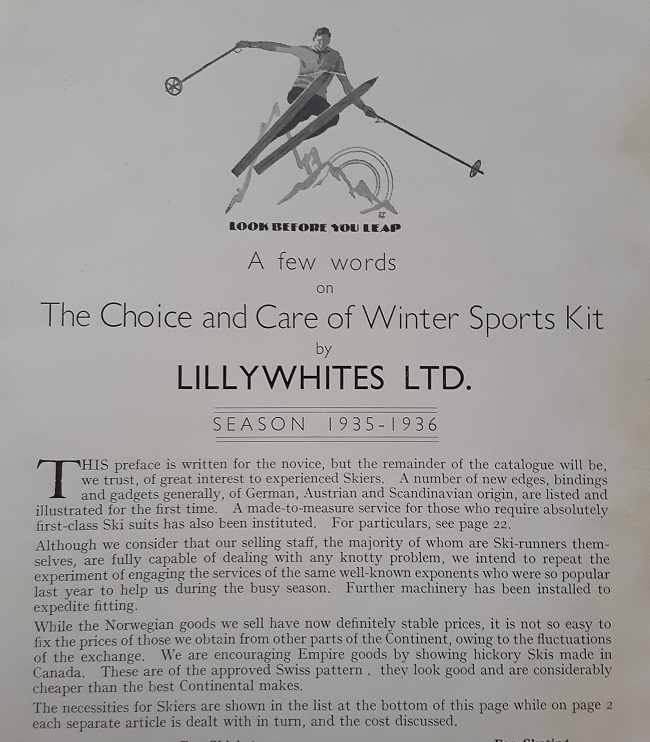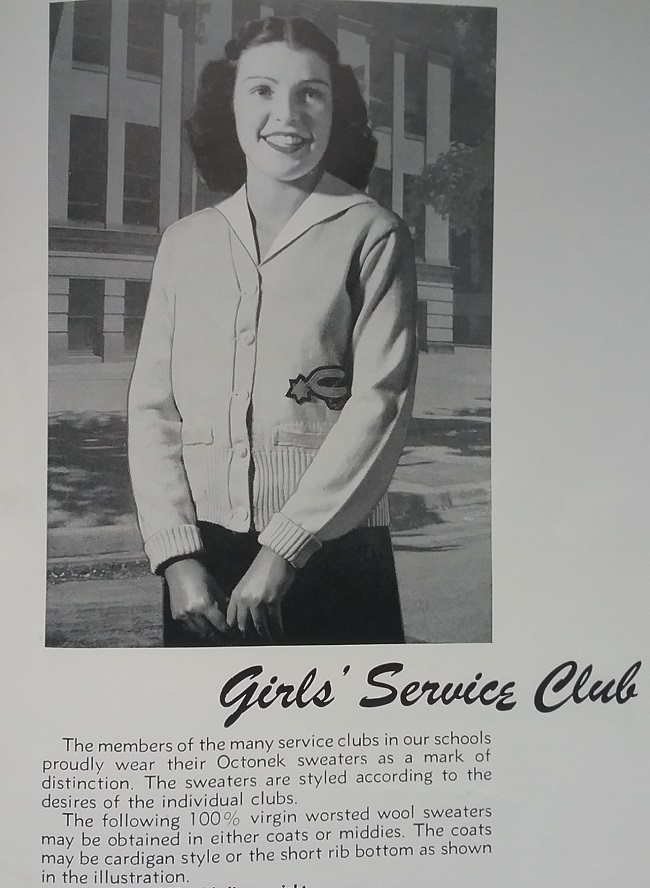
In 1903 women were in the S-bend corset, and skirts still were sweeping the ground. Amelia Bloomer’s great experiment with pants had failed, and even women cyclists had pretty much settled on skirts over bloomers and knickers for cycling. So how were women at the turn of the twentieth century able to comfortably participate in the growing sports boom?
Probably the best insight on this issue comes from Patricia Campbell Warner in her 2006 book, When the Girls Came Out to Play. Simply put, women wore skirts when participating in sports in a public (meaning men might be present) way, but they turned to bloomers when the situation was private, or included only women. And there were times when bloomers or knickers were worn, but they were concealed beneath a skirt.
I recently acquired Athletics & Out-door Sports for Women, edited by Lucille E. Hill and published in 1903. Hill was the director of physical education at Wellesley, and many of the authors of the sixteen chapters were also associated with women’s colleges. Half of the writers were men.
Another book I’ve been reading (well, actually browsing) on sportswomen in the same era was written by women participants in various sports. This might seem like an advantage, but what was produced was a collection of stories praising each individual sport instead of giving the basics of how to participate. In addition, the topics were definitely targeted toward the British upper class: yachting, stag hunting, and riding to the hounds being covered.
So it has been a real pleasure reading a book that not only is helpful in detailing the clothing women were advised to wear for sports, but also in explaining why, in the customs of the day, such attire was recommended. Not only that, but the photograph illustrations are great.
In her introduction, Hill explains that the only real equipment needed for a woman to get “splendid, daily athletic exercise” is a short skirt and a pair of shoes. Remember, this is 1903, and “short” pretty much means several inches from the ground. In a chapter on cross-country walking it is advised that ” Old clothes are best – warm and not too tight. No constriction of any part of the body can be permitted; loose waists, knickerbockers, and short skirts are always advisable.” It may be that the author, a man, was trying to say “No corsets,” but he stopped short at making that pronouncement. He went on to endorse sweaters and woolen underwear, and to abolish pointed toe boots and any heels over half an inch.

Ms. Hill explained that before participating in sports, a woman must first build up her strength through training at home or at a gymnasium. And while we are not given a written description of what should be worn, we are told for the only time in the book, that corsets are simply not necessary. If a woman cannot give up her corset for exercise, then it must at least be worn loose. All the photos in this section of the book show the women exercising without corsets.
She will soon give it [corset] up, for its support will not be needed. She will have as a result of the exercise a corset of her own beneath the skin, a corset of strong and elastic muscular tissues, much better than steel and whalebone. Anthony Barker

When playing indoors the regulation gymnasium suit of bloomers and a loose blouse of some thin woollen material such as serge is usually worn…

while in the open air a somewhat heavier costume is adopted, a short skirt of some durable cloth like corduroy, and a sweater, or an easy-fitting woollen blouse. Ellen Bernard Thompson
Though the author makes it sound like the skirt and sweater are for reasons of health, I think it is probably a case of not being seen in public in the unseemly bloomers.

There is no distinct golfing costume, but I would advise a short skirt, a shirt-waist that does not bind, and a sensible pair of shoes, large enough to be absolutely comfortable, and with very low heels. Some prefer tennis shoes with no heel at all. One must have rubber or hobnails on the soles to keep from slipping. Frances C. Griscom

When taking up a sport the first thing to consider is the equipment, which should consist of a moderately short walking-skirt, reaching to within four or five inches of the ice, and a pair of well-fitting shoes that can be laced up high enough to give support. Buttoned and low shoes are out of the question. William T. Richardson

The hockey skirt should be plainly made… six inches from the ground all the way round. The shirt-waist, made of flannel, to prevent risk of chills, should be loose fitting. This does not necessitate an ill-fitting garment or untidiness. Petticoats should not be worn, but knickerbockers of the same material as the skirt, fastening at the knee, be substituted. Constance M.K. Applebee

As to costume, looseness is the first and most important particular. The waist should not fit too tight, and it should be particularly free at the elbows and shoulders. The skirt should be short and stiff enough not to get in the way of the knees to to bend so much around them as to bind… Many players wear low canvas slippers with rubber soles, and find them more comfortable and less tiring than leather-bound shoes. J. Parmley Paret

When bowling, women should dress comfortably, avoiding tight-fitting clothes as far as possible. Street shoes are usually worn, but the value of regular bowling shoes is appreciated by the expert. A skirt in short or walking length is preferred, although a long skirt may be worn if occasion demands. A shirt-waist or blouse giving ease at the neck and armholes is essential. Sophie Gundrum

In 1903, it was still standard practice for women to ride side-saddle, and the chapter on riding reflects this attitude.
For my part, I think and hope that the cross saddle for women is more or less a fad, for I cannot see a single advantage it possesses over the side saddle, for looks, good riding, or safety. Belle Beach
Ms. Beach went on to give very particular instructions for the correct riding habit. In the illustration you can see the model is in riding breeches, but Ms. Beach made it clear that the breeches are underclothes, to go under a riding skirt.

In 1903, most women were not swimmers. There was a reason it was called a bathing suit, or even a bathing dress. A day at the beach or lake usually meant a mere frolic in the shallow water. But times were changing. People were beginning to see swimming as a beneficial skill, if not for fun, at least for safety.
The greatest difficulty the female pupil has to encounter is found in the costume which that all-powerful factor, custom, has declared she must wear. Judging from the practical and rational point of view, anything more absurd and useless than the skirt of a fashionable bathing-suit would be difficult to find… A much better garment would be a one-piece loosely fitting garment of fine, light woollen stuff, with the skirt as an adjunct, but not as part of the actual swimming-suit. Edwyn Sandys
What Mr. Sandys is actually describing is the standard gymsuit, perhaps with less full bloomers. As far as I have been able to determine, the difference between an antique bathing suit and a gymsuit is that in a swimsuit the pants are separate, and in a gymsuit the skirt is separate. I am sure there are exceptions, but this is overwhelming what I see in my own research.






























































